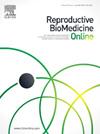Unveiling the role of extracellular vesicles in reproductive success and uterine diseases – a systematic review
IF 3.5
2区 医学
Q1 OBSTETRICS & GYNECOLOGY
引用次数: 0
Abstract
Extracellular vesicles play a key role in endometrium–embryo communication under both physiological and pathological conditions. This systematic review includes 49 studies that highlight how extracellular vesicles help optimize embryo implantation conditions, and 39 evidencing extracellular vesicle contributions to the pathogenesis of uterine diseases, such as endometriosis, endometrial cancer, recurrent implantation failure (RIF), adenomyosis, uterine leiomyoma and endometritis. Under normal physiological conditions, the protein and microRNA cargo of uterine extracellular vesicles regulated endometrial receptivity, maternal tolerance and embryo development, adhesion and implantation. In endometriosis, extracellular vesicles contributed to pathophysiology via angiogenesis, fibrosis, inflammation, lesion progression and reproduction. Extracellular vesicles promoted endometrial cancer progression and metastasis. In RIF, extracellular vesicles hindered embryo invasiveness, migration, survival and implantation. extracellular vesicles contributed to the progression of adenomyosis, negatively impacting decidualization, implantation and embryo development, whereas in uterine leiomyoma and endometritis, extracellular vesicles affected endometrial receptivity, immune tolerance, blastocyst development, migration and invasion. Overall, uterine extracellular vesicles are key mediators of the endometrium–embryo communication required for successful pregnancy. An altered extracellular vesicle cargo from women with uterine disorders may promote disease progression and associated infertility. Therefore, extracellular vesicles represent potential biomarkers and therapeutic targets for uterine disorders.
揭示细胞外囊泡在生殖成功和子宫疾病中的作用-系统综述。
在生理和病理条件下,细胞外囊泡在子宫内膜与胚胎的交流中起着关键作用。本系统综述包括49项强调细胞外囊泡如何帮助优化胚胎着床条件的研究,以及39项证明细胞外囊泡在子宫内膜异位症、子宫内膜癌、复发性着床失败(RIF)、子宫腺肌症、子宫平滑肌瘤和子宫内膜炎等子宫疾病发病机制中的作用。在正常生理条件下,子宫细胞外囊泡的蛋白质和microRNA货物调节子宫内膜容受性、母体耐受性和胚胎发育、粘连和着床。在子宫内膜异位症中,细胞外囊泡通过血管生成、纤维化、炎症、病变进展和生殖参与病理生理。细胞外囊泡促进子宫内膜癌的进展和转移。在RIF中,细胞外囊泡阻碍了胚胎的侵袭、迁移、存活和着床。细胞外囊泡促进了子宫腺肌症的进展,对脱卵、着床和胚胎发育产生负面影响,而在子宫平滑肌瘤和子宫内膜炎中,细胞外囊泡影响子宫内膜容受性、免疫耐受、囊胚发育、迁移和侵袭。总之,子宫细胞外囊泡是成功妊娠所需的子宫内膜-胚胎通信的关键介质。子宫疾病妇女的细胞外囊泡货物改变可能促进疾病进展和相关不孕。因此,细胞外囊泡是子宫疾病的潜在生物标志物和治疗靶点。
本文章由计算机程序翻译,如有差异,请以英文原文为准。
求助全文
约1分钟内获得全文
求助全文
来源期刊

Reproductive biomedicine online
医学-妇产科学
CiteScore
7.20
自引率
7.50%
发文量
391
审稿时长
50 days
期刊介绍:
Reproductive BioMedicine Online covers the formation, growth and differentiation of the human embryo. It is intended to bring to public attention new research on biological and clinical research on human reproduction and the human embryo including relevant studies on animals. It is published by a group of scientists and clinicians working in these fields of study. Its audience comprises researchers, clinicians, practitioners, academics and patients.
Context:
The period of human embryonic growth covered is between the formation of the primordial germ cells in the fetus until mid-pregnancy. High quality research on lower animals is included if it helps to clarify the human situation. Studies progressing to birth and later are published if they have a direct bearing on events in the earlier stages of pregnancy.
 求助内容:
求助内容: 应助结果提醒方式:
应助结果提醒方式:


